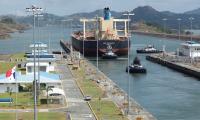At the start of every political cycle, the new government is confronted with the choice between letting the economy move on the beaten track and introducing some fundamental changes to economic management.
Every government, at least on the face of it, chooses the latter alternative. But it soon realizes that the reforms will entail considerable political cost and had better be put off. With discretion becoming the better part of valour, it is business as usual for economic managers.
Why has shaking off the beaten track remained a tall order? To answer this question, let’s look at the two perennial economic problems: the fiscal and trade deficits.
In itself, the fiscal deficit isn’t a vice. In fact, in the face of slow or falling economic growth, it becomes both necessary and desirable: the government needs to step up its spending at a time of sluggish economic activity thus leading to falling or stagnant tax revenue.
Fiscal deficit, however, becomes a problem, and a serious one if it’s persistently high, when, as in the case of Pakistan, it is undergirded by structural rather than cyclic factors. The structural issues are on both the expenditure and revenue sides.
It is customary to categorize public spending as induced and autonomous. The former alters with, while the latter is independent of, the changes in national income or output level. Autonomous expenditures have to be incurred regardless of whether the economy is moving up or down the growth trajectory.
The policy implication is that the government has little discretion in cutting back on autonomous expenditures. This explains why the cuts in overall expenditure almost always entail a reduction of the induced expenditure, such as development spending.
Autonomous expenditures always soak up the lion’s share in the total public spending. In the current financial year budget, autonomous expenditure (debt servicing, defence, civil administration, pensions, grants and transfers), accounted for nearly 80 per cent of the total outlays. With a narrow spending discretion available to the government, an uptick in tax revenue is the only viable option to cut back on the fiscal deficit.
Be that as it may, several sectors of the economy remain undertaxed or outside the tax net. The trading sector generates 19 per cent of the total GDP, but its share in total tax revenue is less than 1.0 per cent. Likewise, agriculture makes up one-fifth of the economy, but farm income remains outside the tax net.
The realty sector, professionals, entertainers, and now YouTubers and TikTokers by and large avoid or evade taxes hands down, leaving the salaried class to bear most of the direct tax burden. One of the first steps towards meaningful economic reforms will be to make all sections of society contribute to the state kitty proportional to their income. But since the undertaxed sectors represent the support base of one major party or another, they remain untouchable.
Fiscal constraints are compounded by tax exemptions or reliefs as well as subsidies, notably for commodities like sugar, whose major beneficiaries are big industrial houses, many owned by politicians across the political spectrum. Such packages not only perpetuate a culture of industrial un-competitiveness but also worsen an already skewed distribution of scarce resources.
A country’s trade deficit indicates in essence that it is consuming more than it is producing. The difference is met by borrowing abroad and thus accumulating external debt. Cutting the trade deficit will require either ratcheting up output or ratcheting down consumption.
As Pakistan is the fifth largest country in the world, where more than 64 per cent of the population is under the age of 29 and is growing at a rate of 2.5 per cent per annum (per the 2023 census), cutting back on essential consumption is neither possible nor desirable.
Given the nation’s penchant for conspicuous consumption, it will remain difficult to slash non-essential consumption or even wasteful expenditure as well. This leaves a sustained increase in output relative to consumption as the only feasible option.
An increase in output is either demand-pull or supply-push. If the demand for a commodity, such as shirts, rises, businesses will step up production until the output reaches capacity. Should the upswing in demand continue, the only way to satisfy it will be to import shirts, thus running the trade deficit.
The credible and long-run option is to perk up the output capacity. But this will require either addition to the capital stock (investment) or shoring up the productivity of the existing resources (land, labour or capital).
At 15 per cent, Pakistan’s investment-to-GDP ratio is among the lowest in the world. The low investment is underpinned by a host of factors, such as low savings due to both low real incomes and a high national propensity for non-essential consumption, lack of entrepreneurship, barriers to entry for small businesses, macroeconomic instability, and security situation (this is especially applicable to foreign investment).
Both the government and banks have been reluctant to support startups for their risky ventures. Through preferential credit and taxation and simplified incorporation procedures, entrepreneurship needs to be supported.
Not only the size but the type of investment is also important. We need real sector investment, which raises the productive capacity of the economy, and not the quick-yielding speculative investment – in stocks and plots – in which wealth is not created but only changes hands.
Although it is for individual companies to decide where to put their savings, the government can encourage the desired investment with the right tax and other incentives or disincentives. Such a move, however, will face stiff resistance from the powerful realty sector, which bankrolls many a political party.
In addition, when an increasing number of parcels of land are being diverted from agriculture to housing societies, a significant expansion in national output is difficult to come by, especially because Pakistan’s two largest industries – textiles and food – are agro-based. Not only does this diversion need to be halted by law but it may be ensured by a policy that houses serve as a place to live and not a speculative venture.
The quality of output is as important as its scale. Production of sub-standard products, even if it is on a mass scale, cannot provide a secure basis for long-term growth. In Pakistan, quality is widely regarded as the most negotiable feature of goods and services. Likewise, businesses are geared more towards holding wages down than towards racking up the productivity of labour.
Because the domestic industry is heavily protected, it can conveniently sell low-quality products at home at high profits. However, the same enterprises are either shy of entering foreign markets or find it exceedingly tough to compete therein. Not surprisingly, exports account for only 8.0 per cent of the GDP, one of the lowest in the world, compared with imports, whose share in the national output is 16 per cent.
This calls for an effective regulatory and facilitatory framework to protect consumers and encourage the domestic industry to move up the quality curve. Such a move, however, may be resisted by powerful producer lobbies, who prefer a hands-off approach on the part of the government.
Another reason the euphoria for the reforms fizzles out is that the fundamental changes that they will entail are likely to put the brakes on the pace of economic growth for a few years. No elected government would like to leave office with economic stagnation mocking its balance sheet.
People want jobs, which can be generated only when the economy expands. Businesses are keen to sell more, which is possible only when consumers have rising incomes and better job prospects. The creditors, who are looking to get their capital back along with the mark-up, would like the debtor country to jack up its earnings. This situation holds the government back from initiating meaningful reforms.
The writer is an Islamabad-based columnist. He tweets/posts @hussainhzaidi and can be reached at: hussainhzaidi@gmail.com
According to Trump, US is earning $2 billion per day in newly-introduced trade tariffs
Negligible contribution of e-commerce underscores persistent reluctance towards digital adoption
Pakistan has become soft state where state cannot even ensure removal of graffiti from walls
Developing human resources is expensive and time-consuming and Pakistan cannot develop without investment
To reach full potential, AI must complement human and social dimensions of learning, rather than replace them
Five people were killed, including one of the guards after being hit over the head with a fire extinguisher







